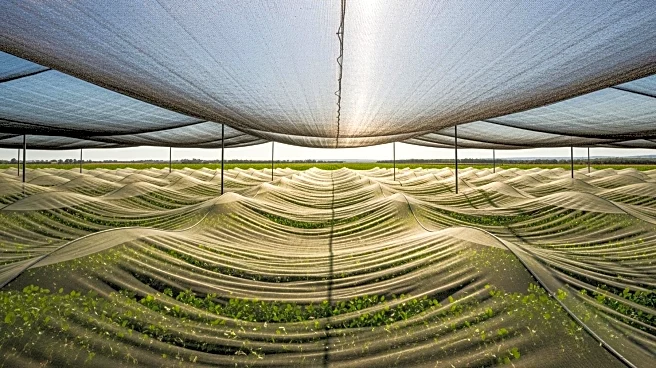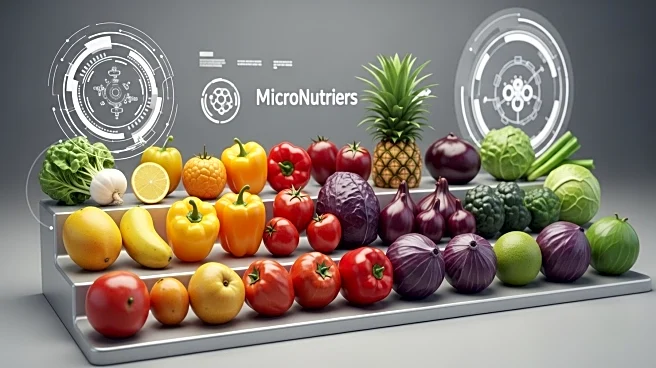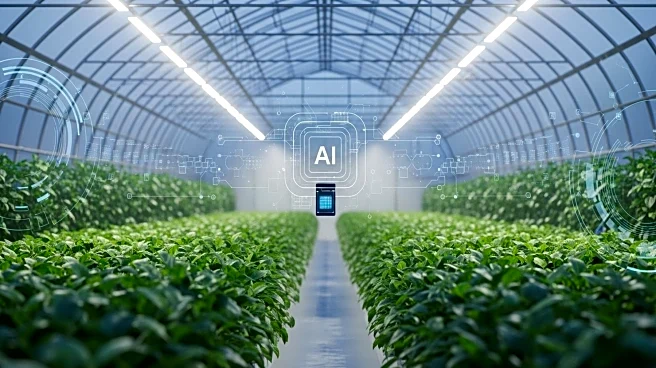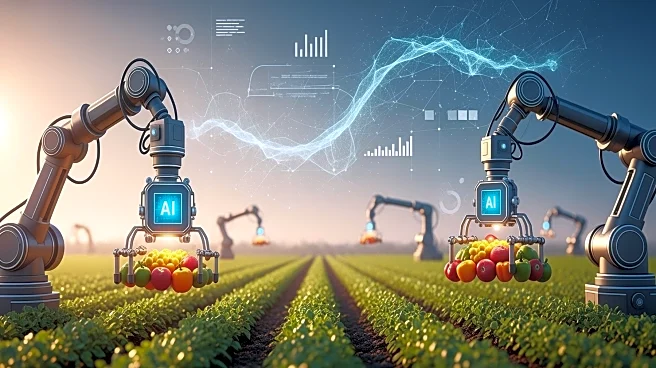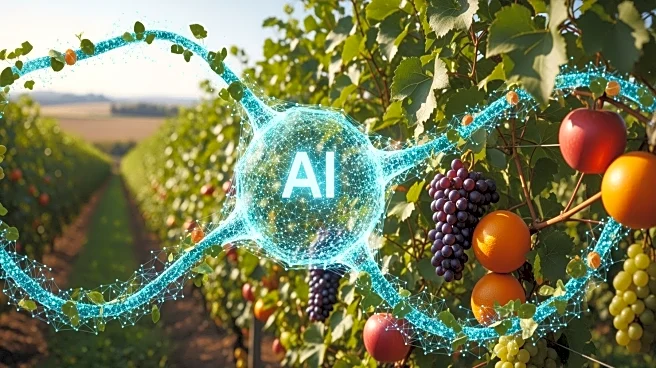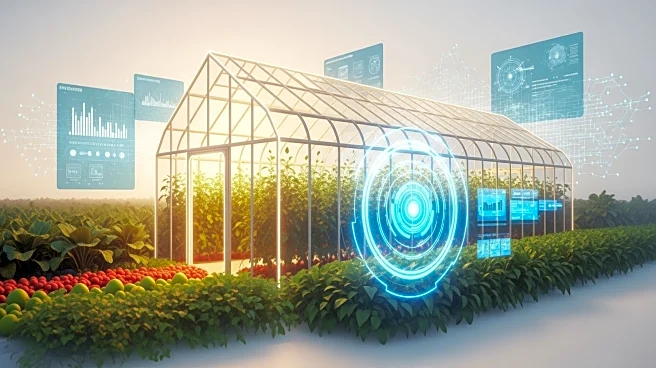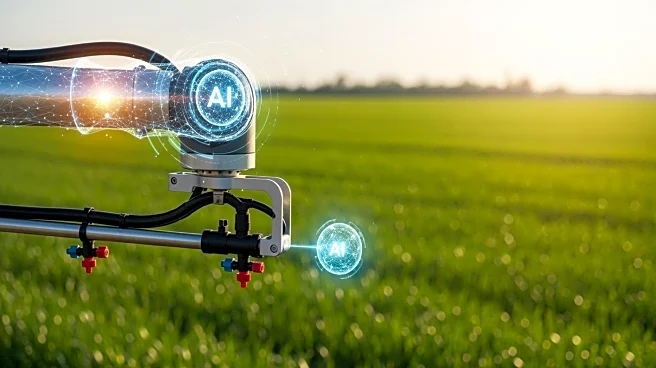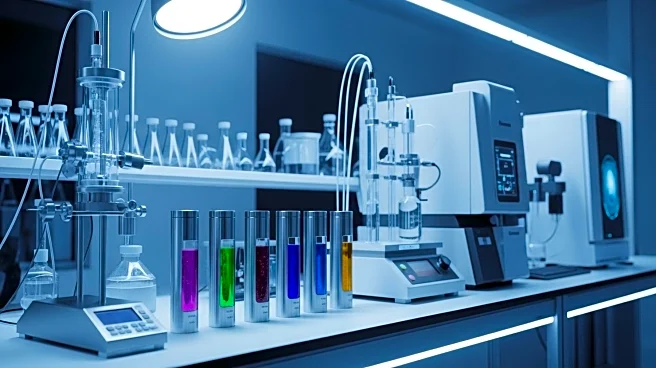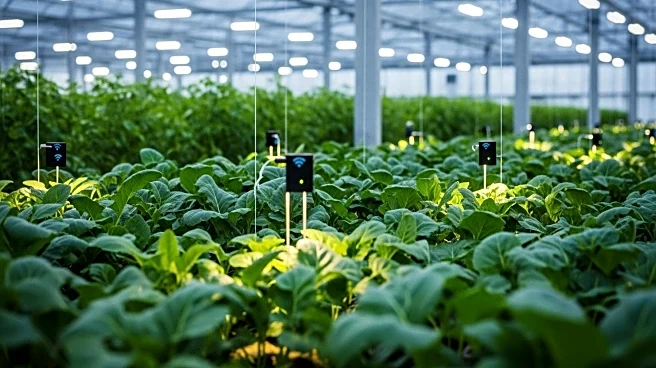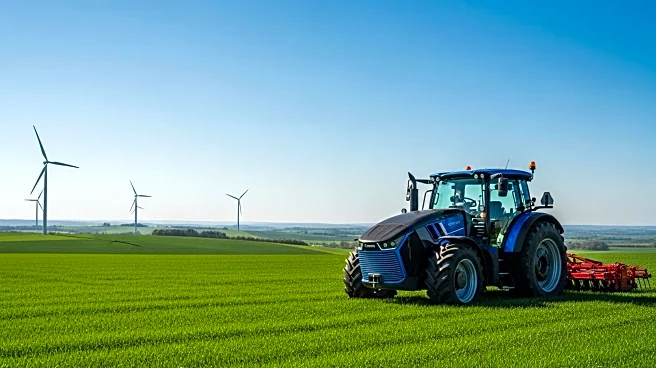What's Happening?
The Agriculture Shade Nets Market is experiencing significant growth, with its size projected to increase from USD 10.11 billion in 2023 to USD 15.21 billion by 2030. This growth is driven by the adoption
of artificial intelligence (AI) and automation technologies, which enhance efficiency, precision, and scalability in the sector. AI-powered analytics and predictive modeling are optimizing operations, reducing waste, and anticipating market trends. Automation is streamlining repetitive processes, minimizing human error, and accelerating production timelines. AI is also improving the precision of agriculture shade nets by enabling real-time monitoring and adaptive control systems, which adjust shading levels dynamically based on environmental variables. This integration ensures optimal light exposure for crops, enhancing growth conditions and reducing stress.
Why It's Important?
The expansion of the Agriculture Shade Nets Market is crucial for sustainable agricultural practices. By leveraging AI and automation, farmers can achieve increased yields and resource efficiency, which are essential for meeting the growing food demands. The integration of AI in design and material selection allows for the development of more durable and efficient nets, tailored to diverse agricultural settings. This customization optimizes factors like UV protection, airflow, and water retention, supporting healthier crop growth. The market's growth also presents opportunities for companies involved in AI and automation technologies, as they play a pivotal role in transforming agricultural practices.
What's Next?
As the Agriculture Shade Nets Market continues to grow, companies are likely to invest further in AI and automation technologies to enhance their product offerings. The competitive landscape will see key players adopting strategies such as investment in research and development, marketing, and product development to maintain their market positions. The regional segmentation study indicates that North America, Europe, and Asia Pacific will lead the market growth, with each region contributing uniquely to the global market expansion. Stakeholders will need to address challenges such as material costs and environmental impacts to sustain growth.
Beyond the Headlines
The integration of AI in agriculture shade nets not only improves crop yields but also contributes to environmental sustainability. By optimizing resource use and reducing waste, these technologies support eco-friendly agricultural practices. The customization of shade nets to specific climatic conditions also highlights the importance of localized solutions in global agriculture. As AI continues to evolve, its role in agriculture will likely expand, offering new possibilities for innovation and efficiency.
